Art & Exhibitions
How Curators Used LinkedIn, Ebay, and Moxie to Get Forgotten Treasures Into Pacific Standard Time: LA/LA
Art specialists went to great, sometimes Kafkaesque lengths to track down works that had never before been shown.
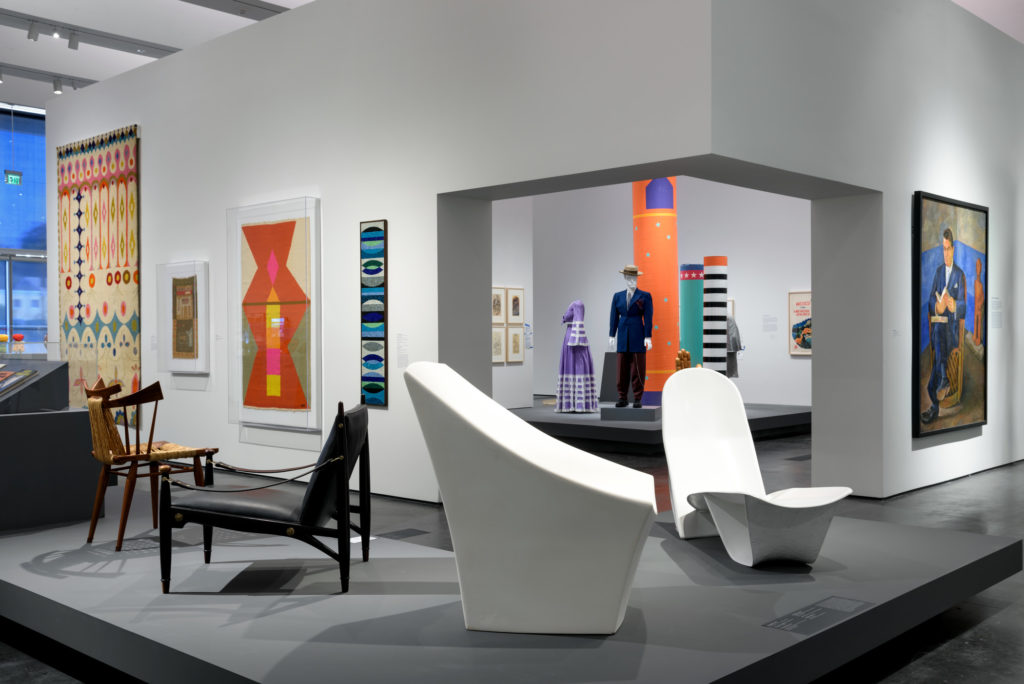
Art specialists went to great, sometimes Kafkaesque lengths to track down works that had never before been shown.

Julia Halperin

In March, Staci Steinberger, an assistant curator of decorative arts and design at the Los Angeles County Museum of Art (LACMA), made a thrilling discovery on eBay.
She had been furiously working to track down design objects for the exhibition “Found in Translation: Design in California and Mexico, 1915–1985,” which tackles the exchange of influences between Mexico and California. But she couldn’t find a good example of a Mayan Revival fireplace, which became popular in California in the late 1920s.
“These are things that are either still in homes,” she says, “or they’ve been destroyed.”
Steinberger had all but given up hope when a colleague passed along an eBay link. The seller was offering a full fireplace by the California Clay Products Company from 1923–32.
“As good museum people do, we went to see it in person, did our research, and got a good museum price,” she says. The earthenware artifact is now on view for the first time in the exhibition, which opens to the public this weekend.
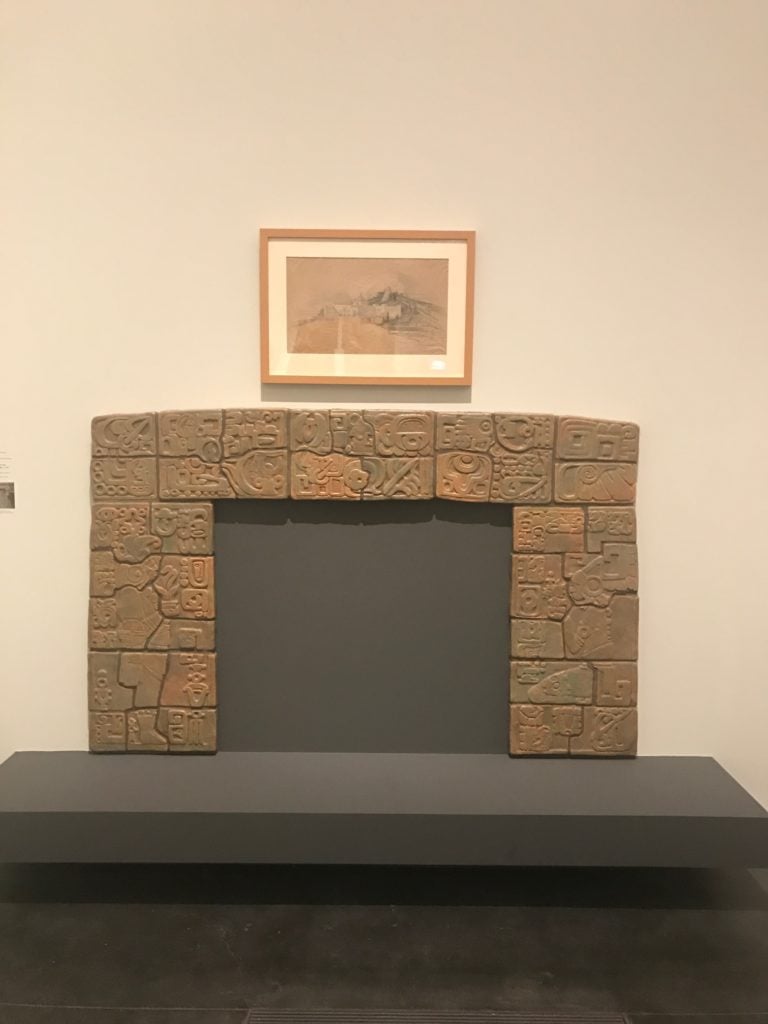
California Clay Products Company’s Fireplace surround (1923-32). Photo: Julia Halperin
The fireplace is just one of many discoveries made by scholars in the lead-up to “Pacific Standard Time: LA/LA,” the $16 million Getty-funded initiative dedicated to Latino and Latin American art.
A significant portion of the works on view at more than 70 participating cultural institutions across Southern California have never been published or shown in museums before—which means curators had to go to great lengths to find them. Call it extreme research.
Curators say that PST: LA/LA’s hefty grants and extended five-year planning process made it easier for them to pursue unlikely paths.
“It’s really about having a hunch, looking at something, and saying, ‘We need to follow this lead,’” says Cecilia Fajardo-Hill, who co-organized “Radical Women: Latin American Art, 1960-1985” at the Hammer, one of the initiative’s most ambitious exhibitions.
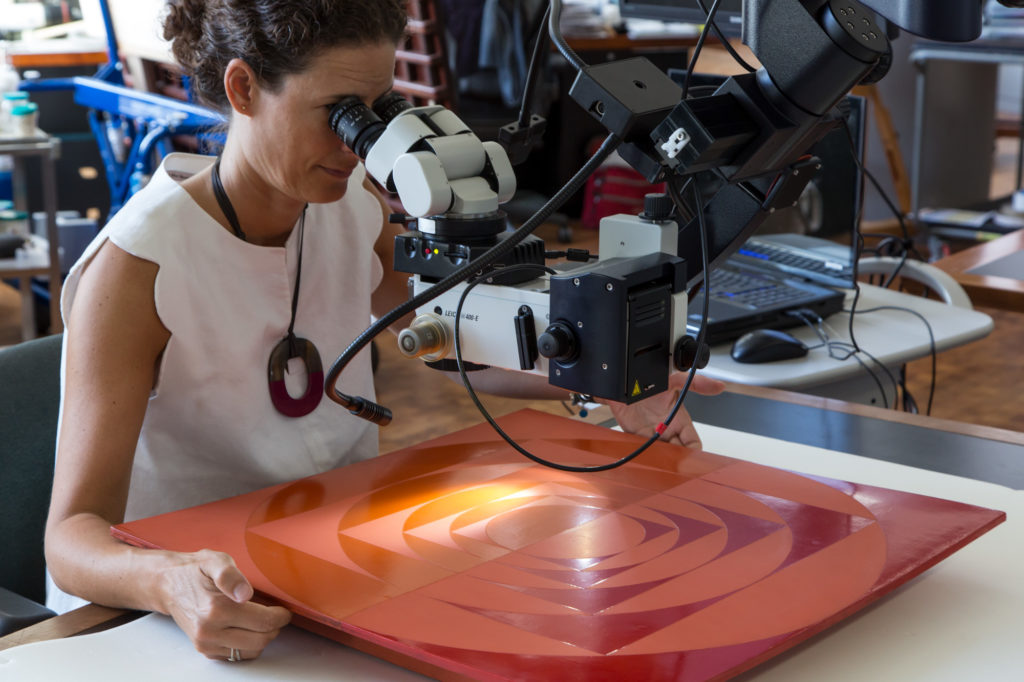
Getty Conservation Institute staff member Pia Gottschaller examines the surface of Hermelindo Fiaminghi’s Seccionado no. 1 (1958).
Every curator has his or her own stories of the winding roads they traveled to track down material. At LACMA, in addition to trawling eBay, scholars took to Facebook and LinkedIn. Social media allowed them to find relatives of artists and designers who had been lost to history.
At REDCAT, a contemporary arts center in Los Angeles, staff traveled by boat to a remote part of the Dominican Republic to visit one of two surviving directors of the performance Palabras Ajenas (1967), an anti-Vietnam war drama by the late Argentine artist León Ferrari. The epic eight-hour event has not been performed since 1972; REDCAT will stage it in full for the first time ever on Saturday.
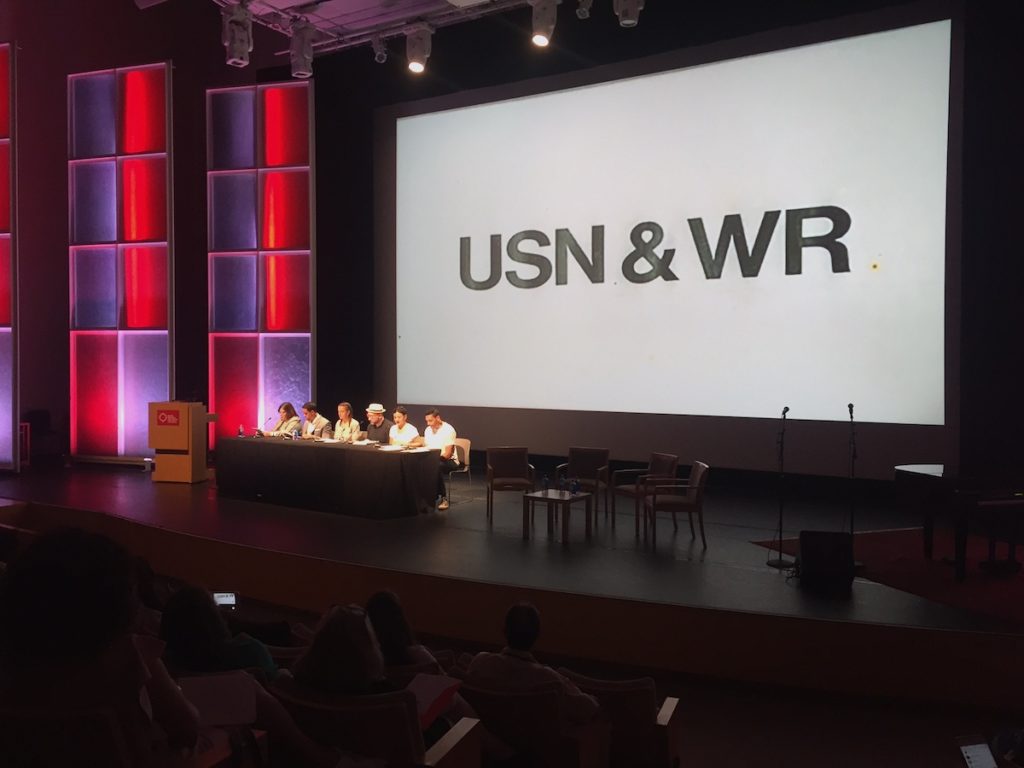
An excerpt of León Ferrari’s Palabras Ajenas performed at the press launch of Pacific Standard Time: LA/LA. Image: Ben Davis.
The Getty Conservation Institute and the Getty Research Institute, meanwhile, worked with colleague institutions in Argentina and Brazil for three years to study the technical composition of works from the collection of Patricia Phelps de Cisneros, now on view in the exhibition “Making Art Concrete.”
“I was stunned by the discoveries that have emerged,” Cisneros said at the Getty’s press conference on Tuesday.
Sometimes, however, the drawn-out research process bordered on Kafkaesque. Pia Gottschaller, a senior research specialist at the Getty Conservation Institute, worked on and off for months to figure out the proper orientation for Willys de Castro’s Objeto ativo (cubo vermelho/branco) (1962), a red-and-white cube that fuses painting and sculpture.
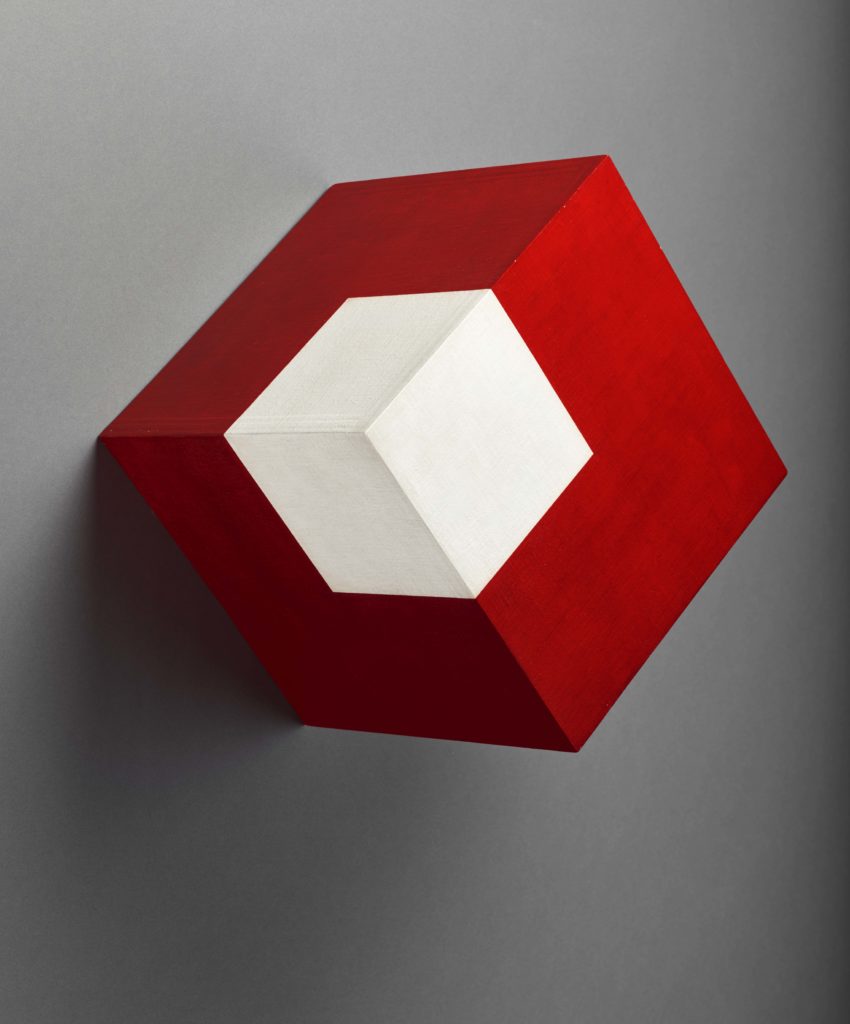
Willys de Castro’s Objeto ativo (cubo vermelho/branco) / Active Object (Red/white cube) (1962). Colección Patricia Phelps de Cisneros. Promised gift to the Museum of Modern Art.
She was thrilled when she found an archival image of an early exhibition that included the work. Unfortunately, however, de Castro created two very similar cubes—one in red and one in blue—and because the photo was in black and white, it was impossible to tell them apart.
In the end, Gottschaller drew on a model of the work, archival photos, and architectural drawings to determine that it had historically been shown inconsistently and needed to be rotated 90 degrees.
Such discoveries, coupled with comprehensive forensic analysis, will enable scholars to more accurately display and better preserve these works in the future. But “it’s not just about the technical aspect,” Gottschaller says. An understanding of how the deceptively simple objects were made “increases people’s appreciation,” she notes. “The fewer elements there are, the more masterful you had to be.”
For some curators, the research process involved taking a fine-tooth comb through art history to find worthy artists who had been overlooked, pushed to the margins, or not properly put into context by an earlier generation of historians.
“We were told so many times that these people were nobodies,” Farjado-Hill says of the more than 100 artists in the Hammer’s “Radical Women” exhibition.
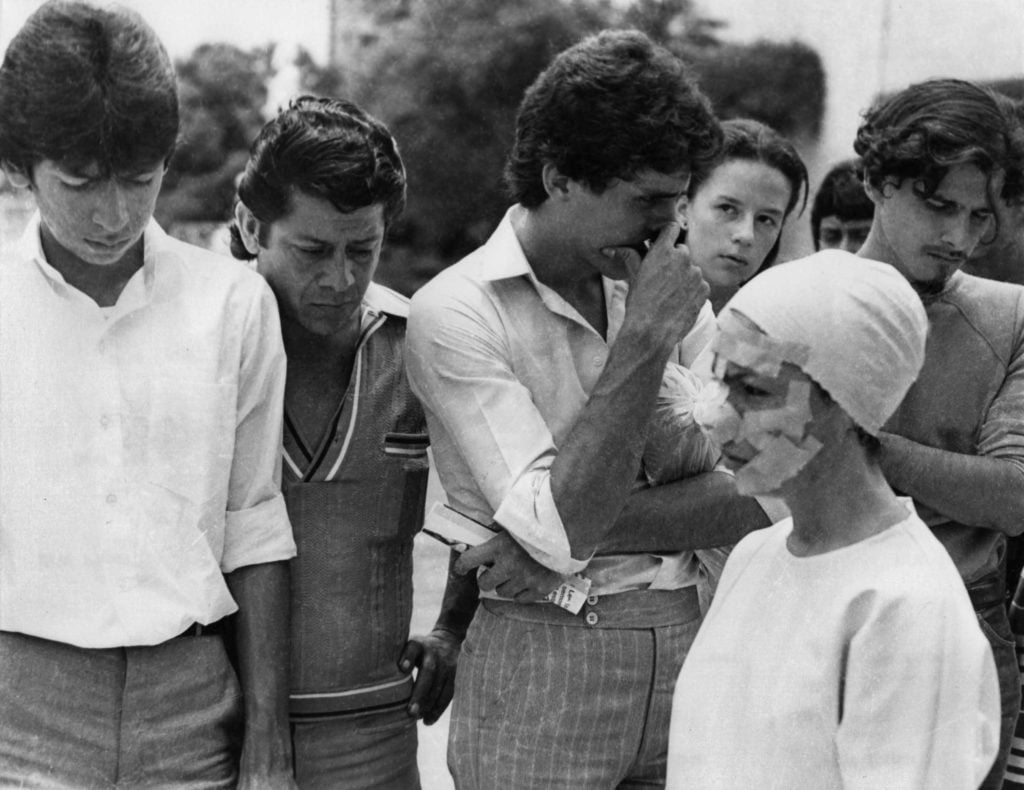
María Evelia Marmolejo’s Anónimo I (Homenaje a los desaparecidos y torturados dentro de los hechos violentos) (1981). Photography: Fabio Arango. Courtesy of María E. Marmolejo and Promoteo Gallery di Ida Pisani, Milan. Artwork © the artist.
Similarly, Bryan Barcena came up against a dearth of scholarship in the process of organizing Brazilian artist Anna Maria Maiolino’s solo exhibition at the Museum of Contemporary Art (MOCA), Los Angeles.
“When I started working on the show, there was no real database of her work,” Barcena, a research assistant at MOCA, says. “The scholarship was myopic, and mostly focused on the formal. It hadn’t considered her network.”
To help him process exactly where Maialino fit in her broader historical context, he created a whirlwind map of all of the crisscrossing influences in the Brazilian art world. The result looks a bit like what might happen if Carrie Mathison from Homeland curated an art exhibition.

Bryan Barcena’s map of influences, created for MOCA’s Anna Maria Maiolino exhibition.
Networks also played an important role in the exhibition “Axis Mundo: Queer Networks in Chicano LA,” organized by MOCA and the ONE National Gay and Lesbian Archive, which is chock full of never-before-seen material. Many of the artists lived in Los Angeles for decades but have never been shown by mainstream art institutions.
“It was about digging for a history that was under the surface,” says David Frantz, the curator of the ONE National Gay and Lesbian Archive.
In researching the show, Frantz visited the family storage unit of the late artist Ray Navarro. There, in a box, he found a triptych, Equipped (1990), which the artist made the same year he died of AIDS. Because Navarro had gone blind and deaf, he enlisted his friend, fellow artist Zoe Leonard, to fabricate the work for him.
It is a series of images of the mobility devices Navarro used to navigate the hospital in his final months with wry, suggestive captions underneath. “We knew that there were multiple versions [of the work]—I didn’t know there was a third,” Frantz says.
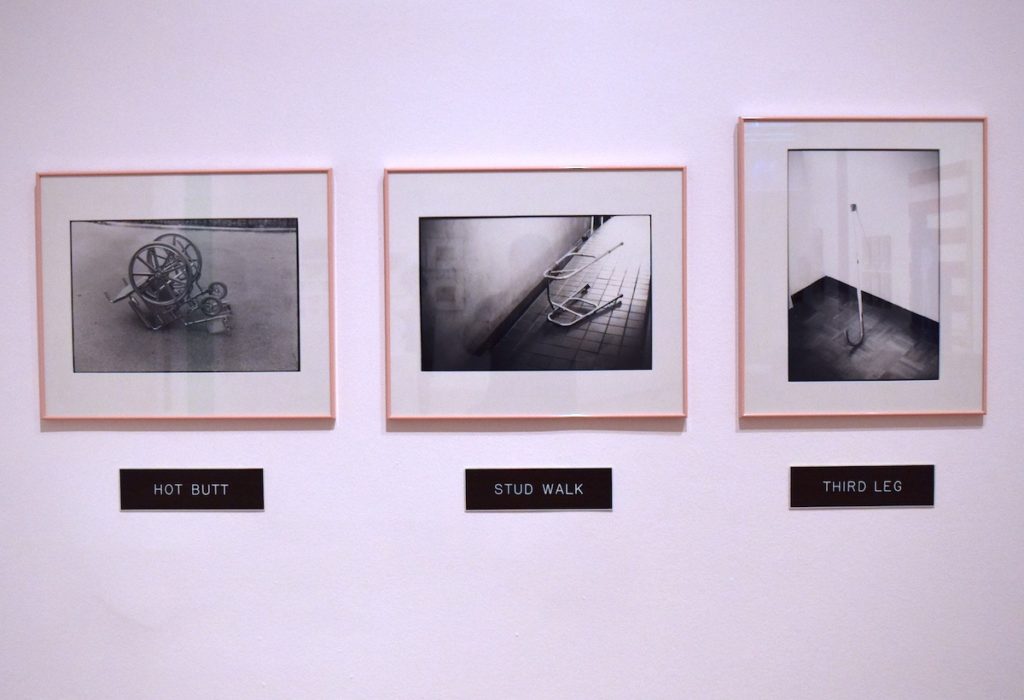
Ray Navarro, fabricated by Zoe Leonard, Equipped (1990). Image: Ben Davis.
Many other works now on view in the “Axis Mundo” show had been shoved in the back of filing cabinets or under piles of papers in a closet. “It’s really about serendipity,” Frantz says. “Some people just save things. And thank god they do.”